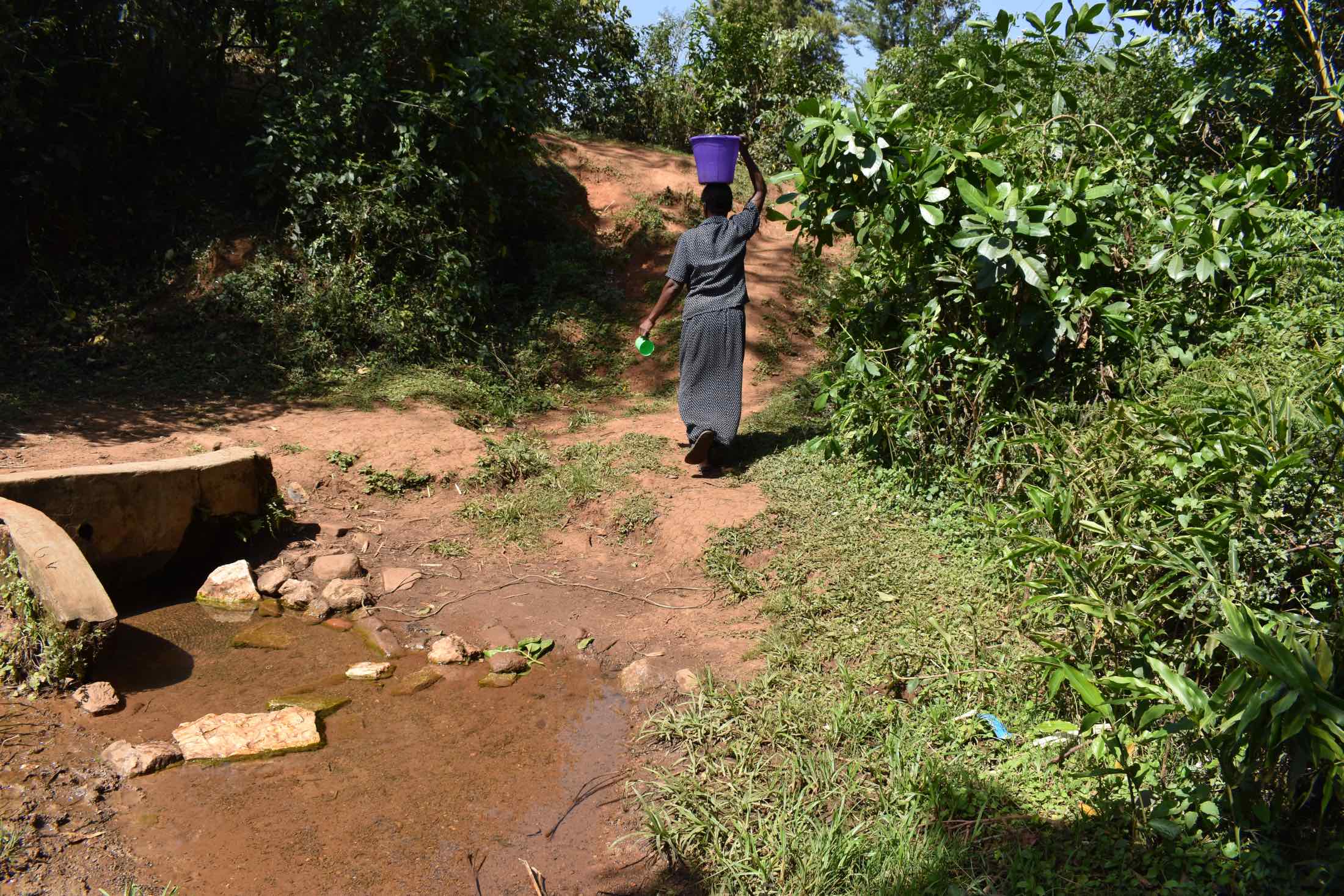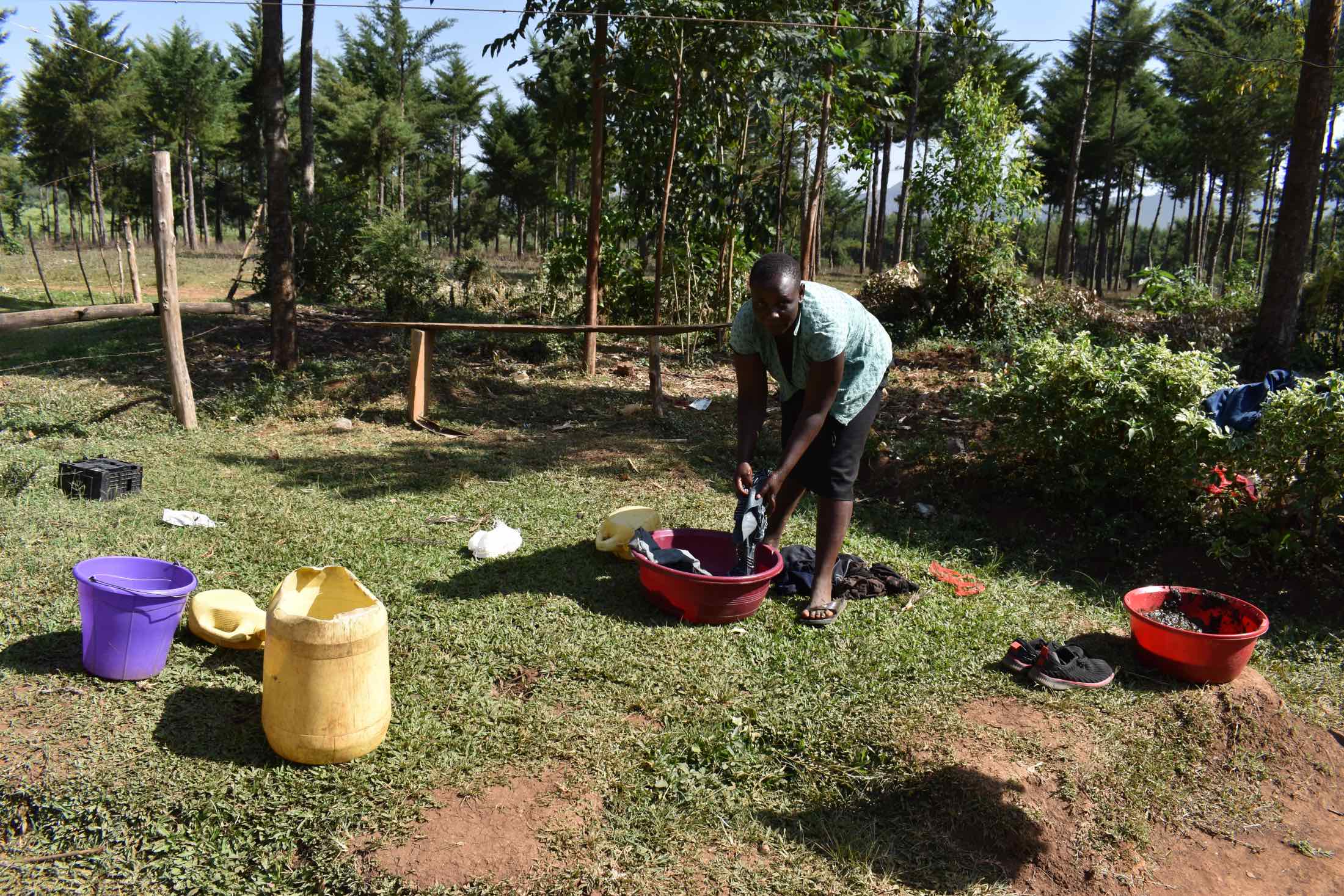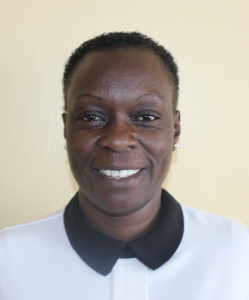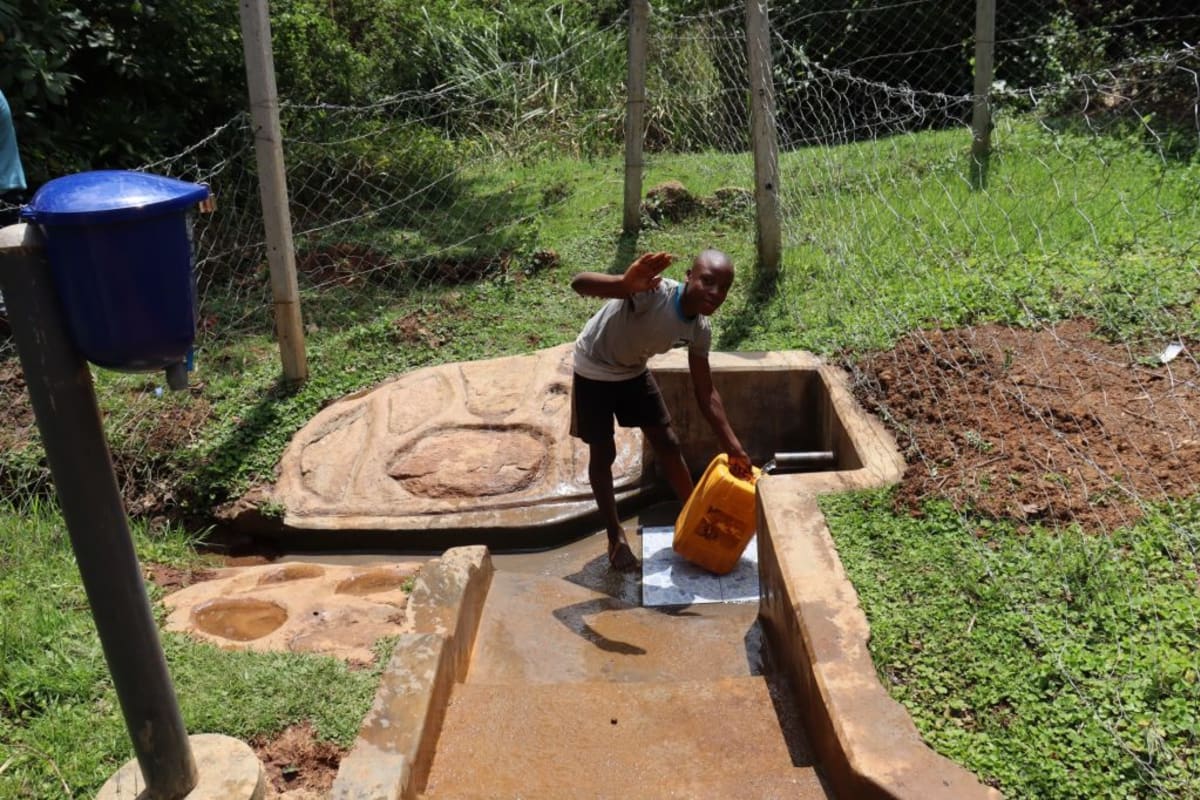You would think that, after it rains at Muhoni community, it would be the best time to fetch water from its local spring. All that freshwater should rejuvenate the spring and ensure there's plenty of water for everyone. Right?

But according to Ann, a 61-year-old retired schoolteacher who lives in Muhoni, this is not the case. "When it rains, we can't fetch water because the water becomes dirty," she said. "So we wait until the following day so that we can get water."
So the villagers will go thirsty for a day because the spring water becomes filled with sediment from the bottom of the spring, meaning they, their children, and their livestock may become dehydrated. And all the chores involving water: cooking, cleaning, laundry, and gardening will be paused. Considering that the main sources of income in this community are from growing maize and raising livestock, the disruption in water supply makes life harder for everyone.
The spring is deep in the surrounding Malava rainforest, lined with trees and bushes. Because of its remote location, people come from far and wide to fetch water here - some 240 of them.

"When I come from school, I find a large crowd at the spring, which makes me do my homework late at night because of the time wasted waiting for my turn to draw water," said Doricas, a 17-year-old student.
After visiting Muhoni village, I can say, the environment around the spring is pathetic. When community members come and draw water, some step inside the spring. The spring area becomes muddy and slippery when it rains. Also, they use unclean containers, which makes some of them become sick of typhoid.
With the price of living going up everywhere, especially now due to COVID-19, community members here cannot afford proper medication to treat waterborne diseases. Some have to go without medication at all.
What We Can Do:
Spring Protection
Protecting the spring will help provide access to cleaner and safer water and reduce the time people have to spend to fetch it. Construction will keep surface runoff and other contaminants out of the water. With the community’s high involvement in the process, there should be a good sense of responsibility and ownership for the new clean water source.
Fetching water is a task predominantly carried out by women and young girls. Protecting the spring and offering training and support will, therefore, help empower the female members of the community by freeing up more of their time and energy to engage and invest in income-generating activities and their education.
Training on Health, Hygiene, COVID-19, and More
To hold trainings during the pandemic, we work closely with both community leaders and the local government to approve small groups to attend training. We ask community leaders to invite a select yet representative group of people to attend training who will then act as ambassadors to the rest of the community to share what they learn. We also communicate our expectations of physical distancing and wearing masks for all who choose to attend.
The training will focus on improved hygiene, health, and sanitation habits in this community. We will also have a dedicated session on COVID-19 symptoms, transmission routes, and prevention best practices.
With the community’s input, we will identify key leverage points where they can alter their practices at the personal, household, and community levels to affect change. This training will help to ensure participants have the knowledge they need about healthy practices and their importance to make the most of their water point as soon as water is flowing.
Our team of facilitators will use a variety of methods to train community members. Some of these methods include participatory hygiene and sanitation transformation, asset-based community development, group discussions, handouts, and demonstrations at the spring.
One of the most important issues we plan to cover is the handling, storage, and treatment of water. Having a clean water source will be extremely helpful, but it is useless if water gets contaminated by the time it is consumed. We and the community strongly believe that all of these components will work together to improve living standards here, which will help to unlock the potential for these community members to live better, healthier lives.
We will then conduct a small series of follow-up trainings before transitioning to our regularly scheduled support visits throughout the year.
Training will result in the formation of a water user committee, elected by their peers, that will oversee the operations and maintenance of the spring. The committee will enforce proper behavior around the spring and delegate tasks that will help preserve the site, such as building a fence and digging proper drainage channels. The fence will keep out destructive animals and unwanted waste, and the drainage will keep the area’s mosquito population at a minimum.

 Protected Spring
Protected Spring
 Rehabilitation Project
Rehabilitation Project










































